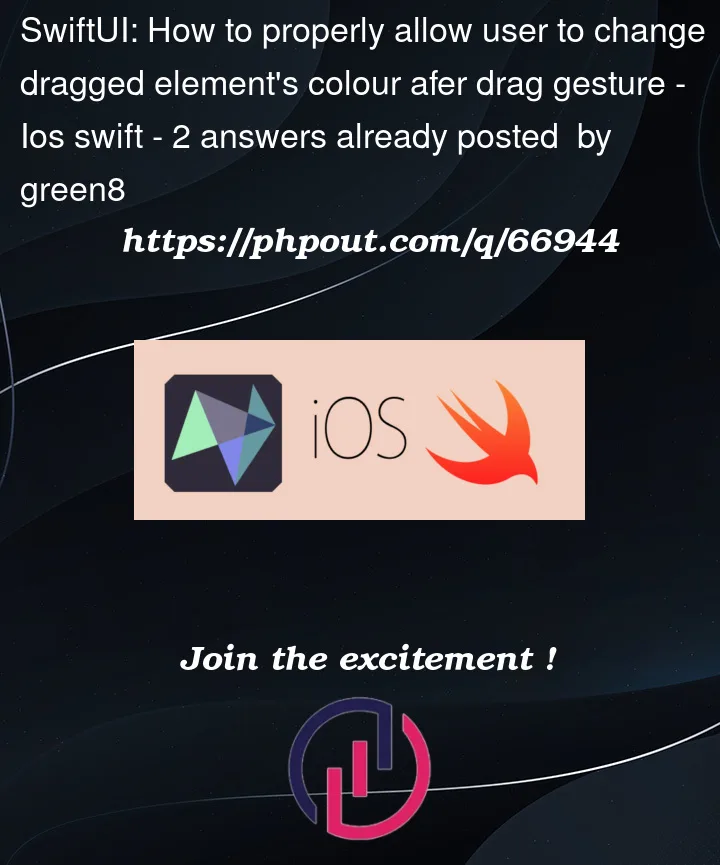I am trying to create app that allows user to drag through the grid, and change colour of each touched cell. Some kind of pixel art drawing machine, but after making simple example it doesn’t work, and I don’t know why.
Here is my code:
struct Cell: View, Hashable, Equatable {
@State var color: Color = .red
let id = UUID()
static func == (lhs: Cell, rhs: Cell) -> Bool {
return lhs.color == rhs.color
}
func hash(into hasher: inout Hasher) {
hasher.combine(color)
}
var body: some View {
Rectangle()
.frame(width: 40, height: 40)
.foregroundColor(color)
}
}
struct Grid: View {
@State private var cells: [[Cell]] = (0..<10).map { _ in
(0..<10).map { _ in Cell() }
}
var body: some View {
VStack(spacing: 0) {
ForEach(cells, id: .self) { row in
HStack(spacing: 0) {
ForEach(row, id: .id) { cell in
cell
}
}
}
}
.background(Color.black)
.gesture(
DragGesture()
.onChanged { value in
let width = 40
let height = 40
let x = Int(value.location.x / CGFloat(width))
let y = Int(value.location.y / CGFloat(height))
// Make sure the indices are within the bounds of the grid
if x >= 0 && x < 10 && y >= 0 && y < 10 {
self.cells[y][x].color = .green
}
}
)
}
}




2
Answers
It’s good to create separate models for cells.
here is a quick fix.
@raja-kishan approach is good but you can just remove
@Statefrom@State var color: Color = .redfrom your Cell Struct like this.